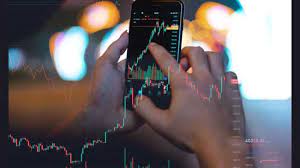
CFD Trading Demystified: Understanding Contracts for Difference
Contract for Difference (CFD) trading is a versatile and increasingly popular method for speculating on various financial markets, from stocks and commodities to currencies and cryptocurrencies. Despite its widespread use, CFD trading can seem complex and intimidating to beginners. In this article, we’ll demystify CFD trading by breaking down the key concepts and mechanics behind Contracts for Difference.
What is a CFD?
At its core, a Contract for Difference is a financial derivative that allows traders to speculate on the price movements of an underlying asset without owning the asset itself. Instead of purchasing the actual asset, traders enter into a contract with a broker to exchange the difference in the asset’s value between the contract’s opening and closing prices.
How does CFD trading work?
When opening a CFD position, traders choose whether to go long (buy) or short (sell) based on their market outlook. If a trader believes the price of the underlying asset will rise, they go long; if they anticipate a price decline, they go short. The profit or loss on a CFD trade is determined by the difference between the entry and exit prices.
Leverage and Margin:
One of the defining features of cfd trading is the ability to use leverage, which allows traders to control a larger position with a smaller upfront investment. For example, a leverage ratio of 10:1 means that for every $1 of capital, the trader can control $10 worth of the underlying asset. While leverage amplifies potential profits, it also increases the risk of significant losses.
Risk Management:
Effective risk management is essential for success in CFD trading. Traders can mitigate risk by setting stop-loss orders, which automatically close a position at a predetermined price to limit potential losses. Additionally, diversifying the portfolio and using appropriate position sizing relative to account size can help manage risk.
Benefits of CFD Trading:
1. **Access to Various Markets:** CFDs offer exposure to a wide range of markets, including stocks, indices, commodities, currencies, and cryptocurrencies, all from a single trading account.
2. **Leverage:** As mentioned earlier, leverage allows traders to amplify their exposure to the market with a smaller initial investment, potentially magnifying profits.
3. **Flexibility:** CFD trading allows traders to profit from both rising and falling markets, providing opportunities in both bullish and bearish conditions.
4. **No Ownership Requirement:** Unlike traditional investing, CFD trading does not require ownership of the underlying asset, making it easier to speculate on price movements without the complexities of ownership.
In conclusion, CFD trading offers a flexible and accessible way to participate in various financial markets. By understanding the fundamentals of Contracts for Difference, leveraging key features like leverage and risk management tools, traders can demystify CFD trading and navigate the markets with confidence. As with any form of trading, continuous learning, practice, and discipline are essential for success in the dynamic world of CFD trading.